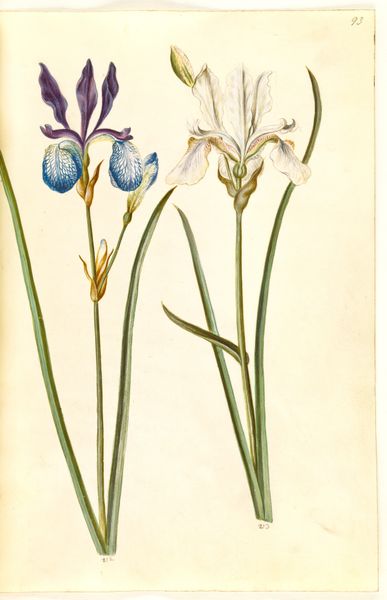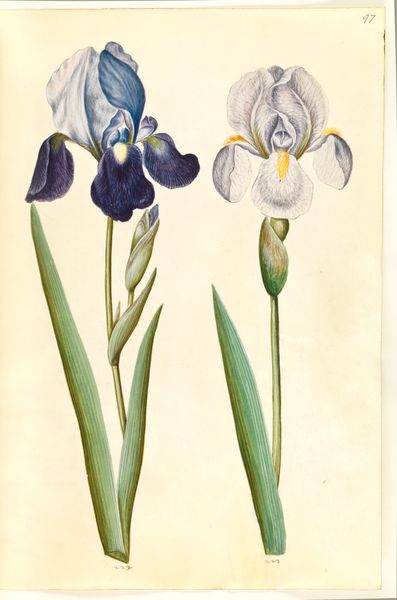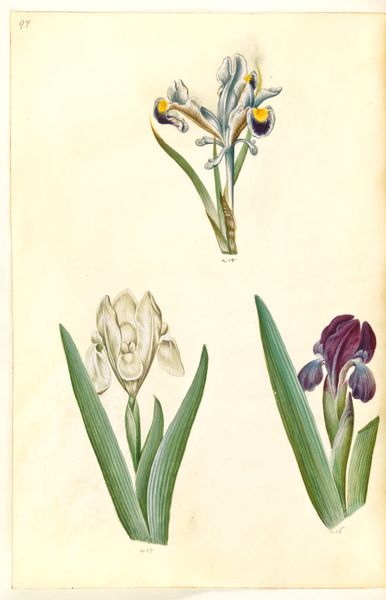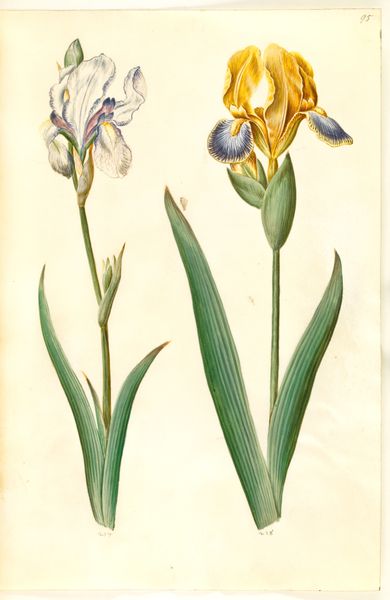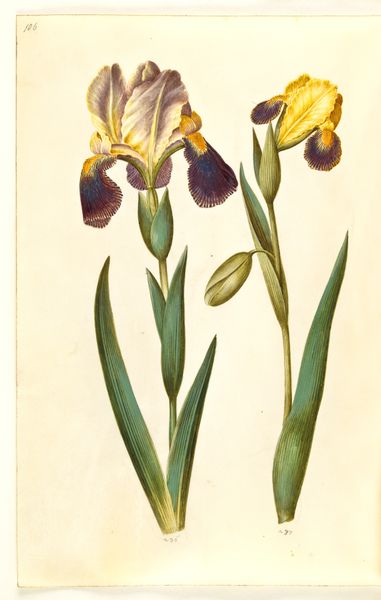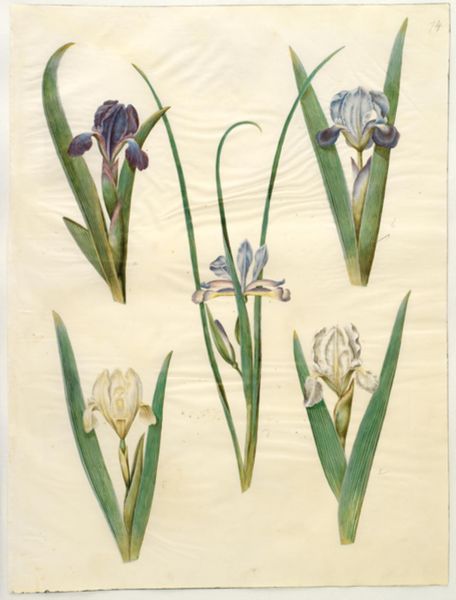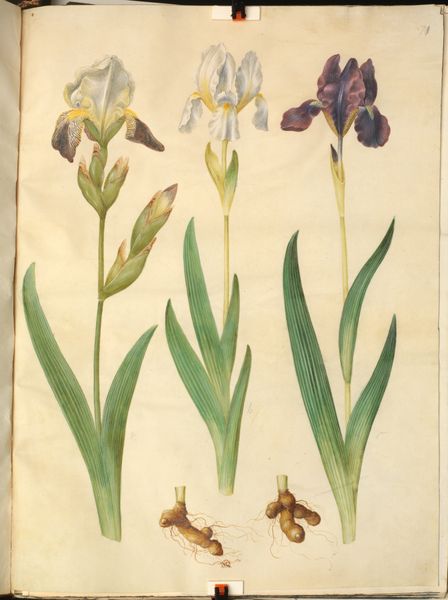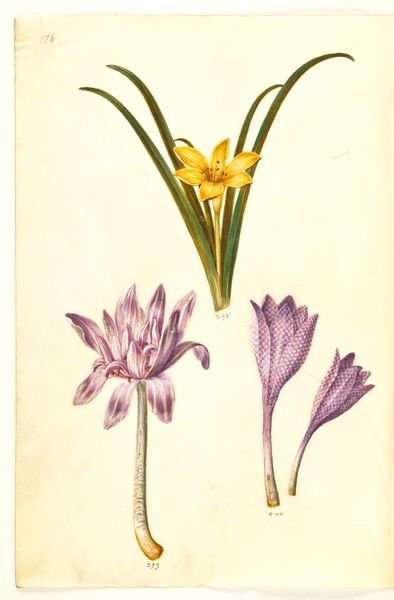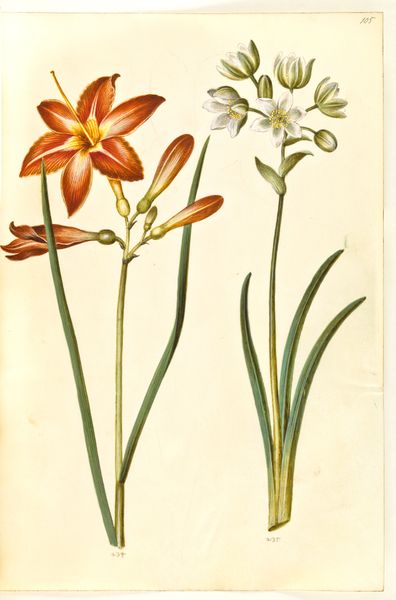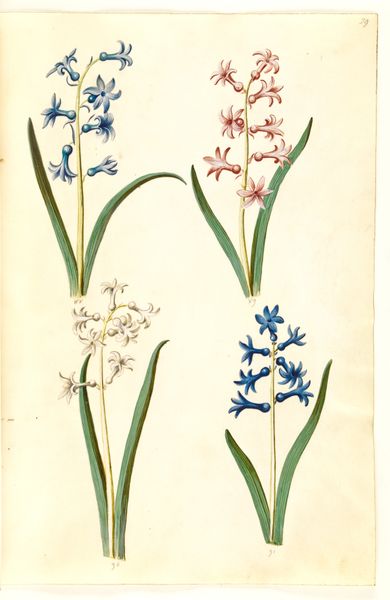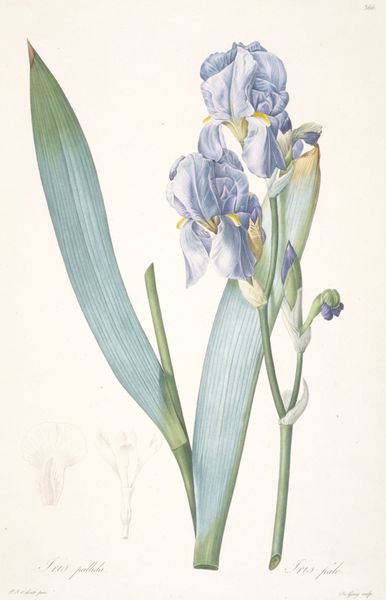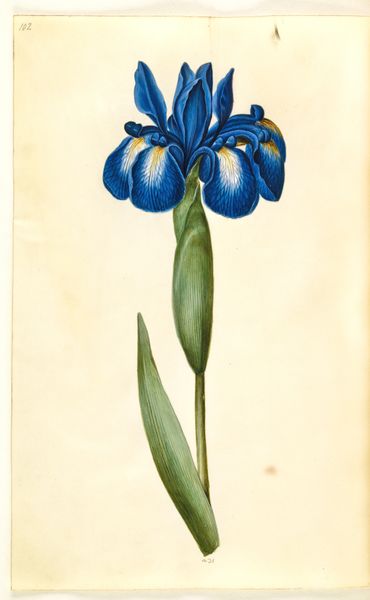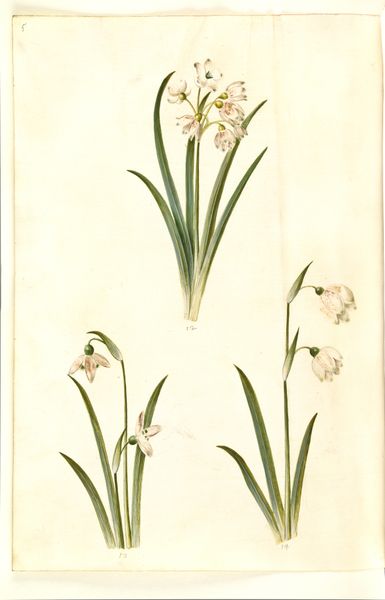
Iris graminea (græsbladet iris); Iris lutescens eller Iris pumila (?) (dværg-iris eller lav iris) 1635 - 1664
0:00
0:00
drawing, print, gouache, watercolor
#
drawing
#
water colours
# print
#
gouache
#
watercolor
#
watercolour illustration
#
northern-renaissance
#
botanical art
#
watercolor
Dimensions: 375 mm (height) x 265 mm (width) x 85 mm (depth) (monteringsmaal), 358 mm (height) x 250 mm (width) (bladmaal)
This is Hans Simon Holtzbecker’s rendering of Iris graminea, or grass-leaved iris, made using watercolor and gouache on vellum. The artist's technique, typical of botanical illustration, demanded meticulous attention to detail, capturing the subtle gradations of color and the delicate textures of the iris petals and leaves. Holtzbecker uses thin layers of pigment to achieve transparency, and thicker applications to build up areas of opacity and depth. The process of botanical illustration has a long and rich history, closely tied to scientific inquiry and exploration. These illustrations served as crucial visual records, documenting the diversity of plant life for medicinal, agricultural, and aesthetic purposes. Before photography, the labor-intensive process of botanical illustration was highly valued, requiring both artistic skill and scientific understanding. By elevating these traditional forms of craft, Holtzbecker’s illustration invites us to reconsider conventional hierarchies between art and craft.
Comments
No comments
Be the first to comment and join the conversation on the ultimate creative platform.
